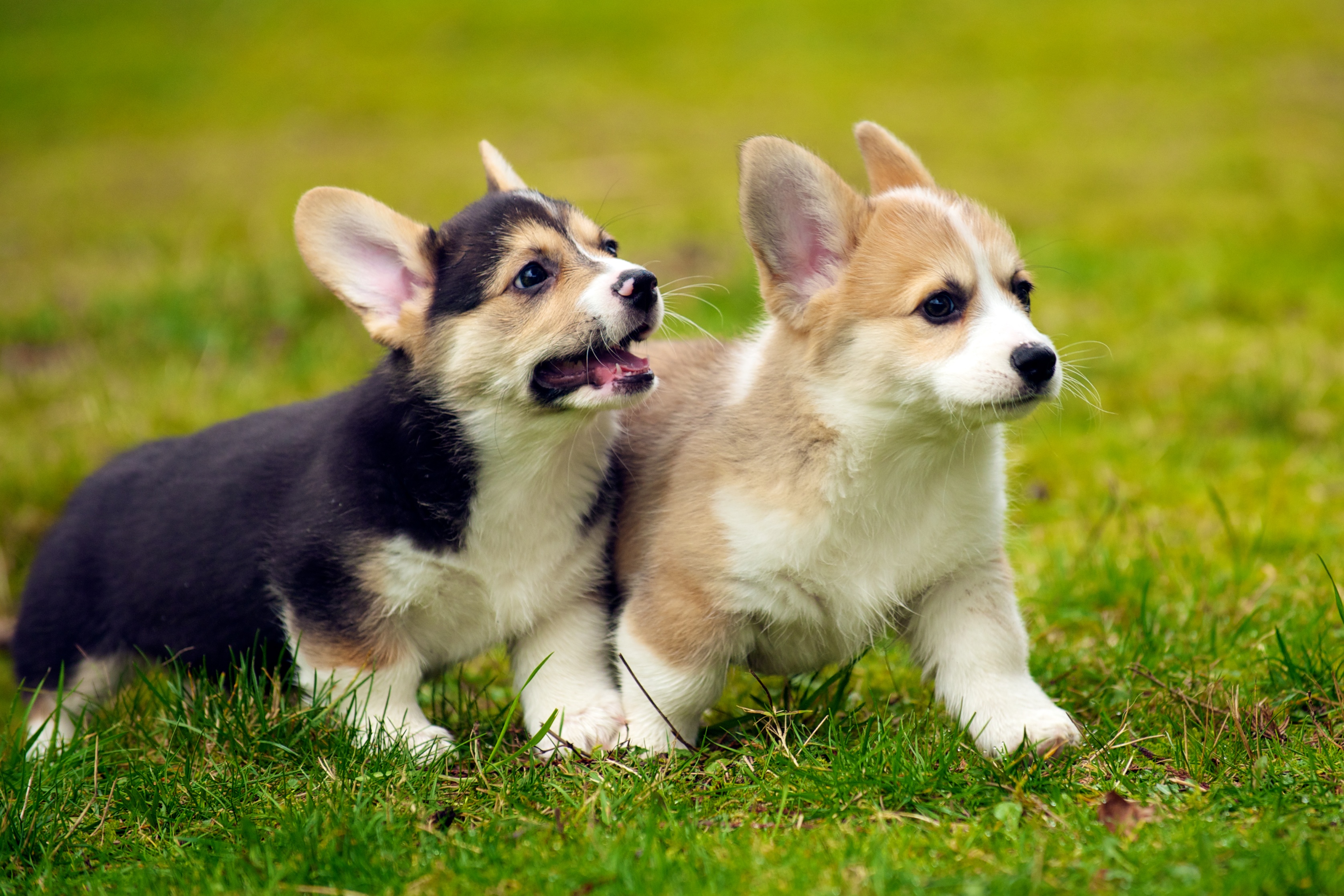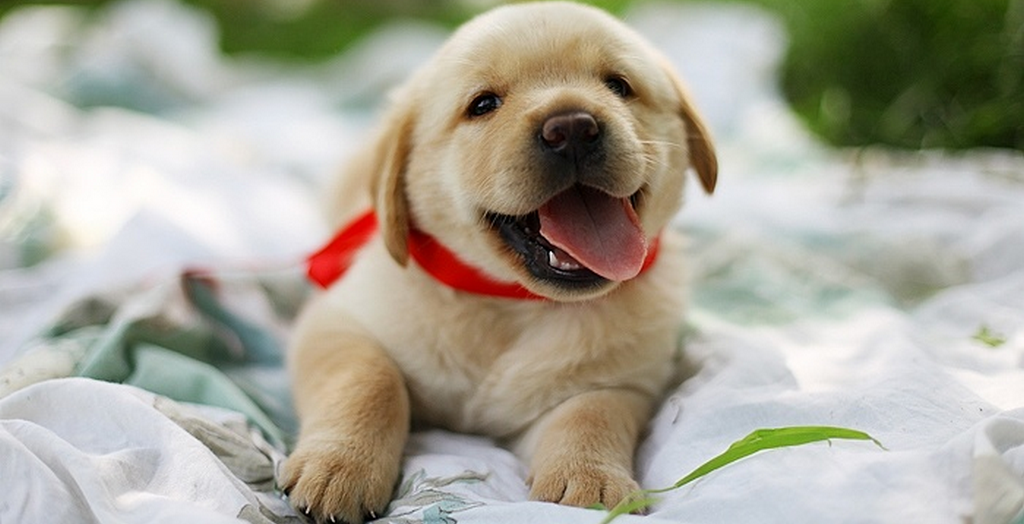Welcoming a puppy into your life brings in a load of joy, love, and laughter. Nothing feels better than having a companion like it, and what can make you happier than witnessing your puppy grow up? Besides all the fun and games, bringing a puppy home also comes with a lot of care and responsibilities. One of the most crucial parts of this responsibility is understanding and gaining knowledge about the development stages your puppy goes through. Understanding these stages helps you be aware and predict what might come next so that you can be extra careful. One of the most critical stages of this developmental period is the puppy fear period. These periods are times when your puppy is extra sensitive to the environment around them. Puppy fear periods play a vital role in building their personality and determining their behavior in the long run. As a dog owner, it is essential to get to know these periods in detail so that you can identify their triggers, create a relatively safe environment, and help them cope healthily. It allows them to be well-adjusted, confident, and happy dogs.
Understanding puppy fear periods
Understanding puppy fear periods, when they usually start, and how to help your puppy through them is extremely important. Let’s dive deeper into puppy fear periods and what you need to know about them.
What are puppy fear periods?
Puppy fear periods are biological stages that puppies go through in the early stages of their lives. These periods are natural occurrences during which your puppy can be susceptible to its environment and may easily be triggered. Genetics, early developmental stages, and the current environment contribute to these fear periods’ onset, duration, and intensity.
What are the symptoms we can see?
During puppy fear periods, your puppy may exhibit extreme fear, sensitivity, heightened anxiety, and vulnerability to its environment. It may be triggered by things or instances that may not have been as much of a bother earlier. Still, it is essential to identify the onset of these fear periods to recognize your dog’s behavior and, therefore, be able to help them navigate it successfully.
When do fear periods occur?
Fear periods occur twice in a puppy. The first occurrence is usually when the puppy is 8 to 11 weeks old. This is when the puppy experiences the world for the first time and forms its perception. At such a time, everything seems unfamiliar, so the high sensitivity can be understood.
The second time fear periods occur is when your dog turns 6 months old, which can last 6 to 8 months. During this time, the dog enters adolescence and is in a mental and physical space where it tests its boundaries. It is natural for your dog to develop new fears or aversions to things that may not have been bothersome earlier.

As a dog owner, it comes as a responsibility to be aware of these stages and be able to recognize them once their onset arrives. You can identify these signs by noting these few things down and being mindful of noticing them if your puppy exhibits such behavior:
For more information visit: Is Your Dog Suffering From Anxiety?
1) Hiding
If your dog hides in enclosed spaces, under furniture, in its kennel or crate, or behind curtains, it might seek refuge from a fearful trigger. Noticing this can help you notice the earlier signs your puppy might be exhibiting.
2) Whining
Vocalization like whining, whimpering, yelping, or crying is a sign that your puppy is experiencing anxiety and fear and needs to express it through making these sounds. If this is a recurrent pattern, it might be puppy fear periods.
3) Trembling
Shivering or trembling in puppies can indicate signs of fear and anxiousness. This behavior can be especially pronounced in response to loud noises, unfamiliar environments, or sudden occurrences.
4) Flattened ears
One of the most common signs that a puppy or dog is experiencing fear or anxiousness is when it tucks its ears flat or pines them backward, giving it a relatively flat appearance.
5) Tucked tail
When done as a way of defense, a puppy’s tail can indicate a lot about its state of mind and presence. A tucked tail is a sign of fear or submissiveness in puppies and can indicate having a trigger nearby that it feels scared of.
6) Excessive panting
Heavy, rapid panting can indicate that your puppy feels anxious or scared, especially if it is unrelated to physical activity. This can be because of heightened anxiety, breathlessness, and experiencing fear.
It is important to note that normal puppy behavior differs from puppy fear periods. While puppies and dogs can experience an unfamiliar, triggering, or scary instance out of the blue once in a while and may also react to it with fear, identifying a recurring pattern through developmental stages is essential to know what is normal puppy behavior and what might indicate the onset of puppy fear periods. If your puppy consistently shows the signs mentioned above in response to specific stimuli, they are likely experiencing fear or anxiety. Understanding this distinction can help you respond appropriately and provide the necessary support.
Tips for helping your puppy overcome fear periods
Helping your puppy overcome fear periods can be very important to ensure their development happens in a healthy and happy environment. If fear periods are not dealt with properly or are neglected, the dog might develop permanency in those fears and even experience worsening conditions, an under-confident and fearful personality, and heightened anxiety. Here are some tips to support your puppy and help them healthily navigate through these developmental stages:
1) Positive reinforcement
Positive reinforcement is when a behavior is reinforced with positive things, like praise, treats, and petting, so your dog can associate that particular stimulus positively. For instance, if your dog is afraid of the vacuum cleaner or the grinder, you can reward it with treats for staying calm around it or exhibiting healthy coping behavior. In this way, you are helping them associate the fearful object with a pleasant experience, reducing and ultimately obliterating the fear.
2) Gradual exposure
Making sure your puppy feels safe and protected does not only come with being extremely careful with their environment and reducing stimuli. It comes with gradually making them comfortable with naturally occurring instances that are usually frequent and common in everyday lives. For instance, if your dog is seemingly afraid of loud noises, you can begin by playing songs or tunes at a lower volume and then gradually raise them to make them comfortable with those amounts of decibels. In this way, even in the future, if there is a loud sound, chances are your dog will not be as afraid, or the intensity of the fear will be low.
3) Stay calm
Puppies have a higher level of perception and sensitivity, especially during fear periods. If you identify a trigger and panic or worry yourself, the dog can easily sense it and worsen the situation. When your puppy is scared or anxious, you need to be calm and reassuring. If you worry for them, scold them, or punish them, it will induce even more anxiety and fear in them. In such situations, give support and reassurance by calming them down and staying calm.
4) Seek professional help
If your puppy’s fear seems out of control or doesn’t go away despite your efforts, you should talk to a trained animal behaviorist or professional dog trainer. These professionals can give you personalized advice and make a training plan for your puppy that fits its needs. For those who are scared or anxious, getting professional help can be very helpful. In general, you can also see an animal behaviorist or professional understand puppy fear periods better and in a more empathetic and knowledgeable perspective, giving you more confidence to deal with it properly.
Role of genetics and breeding in fear period development
Puppy fear periods can also depend upon how the puppy has been brought up during the breeding period, what breed the puppy belongs to, and what environment it has been subjected to in the earlier days or months of bringing them up. Some breeds can be more prone to anxiety and fear as compared to others depending upon their genetic makeup, while some puppies face neglect or highly triggering environments right in the first few days, which affects them further as well.
1) Genetics
Understanding your puppy’s breed is crucial to predict or anticipate their behavior. Some breeds of dogs are naturally more reserved, extra cautious, and sensitive to their environment, while others are more confident and amiable. This genetic makeup usually varies from breed to breed but can also vary from one puppy to the other. Knowing about your dog’s breeds, characteristics, care, and suitable environment can give you an overview of how you must deal with them. This also helps you anticipate the onset of their fear periods and what kind of behavior they might exhibit during that time.
2) Breeding
Sometimes, breeders can get careless and pay attention to the puppies’ health. While adopting or buying a puppy, make sure that you choose a reputable breeder who prioritizes the health and temperament of puppies right at the top. Due to carelessness, the puppies can become more vulnerable to developing severe anxiety and heightened fear, no matter how carefully one tries to deal with it. So, ensure your dog’s breeding process is done through healthy and ethical practices and exposure to socialization.
3) Socialization and training
Besides genetics and breeding, another crucial factor in the puppy development of fear and anxiety in dogs is their exposure to social environments, situations, and training. Puppies need to build confidence and resilience early on, so being around other animals, humans, different environments, and situations is vital. Exposing your dog to such environments is essential for them to develop an early and timely perception, reducing the chances of developing fear-related issues later on.
Common triggers that may cause fear in puppies
Be it unfamiliar environments, abrupt occurrences, or new situational exposure, puppies can be sensitive and highly perceptive to any changes around them. Especially during fear periods, it is natural for puppies to feel anxious and scared in new environments and may be unable to cope well if not supported successfully. Here are some common triggers that might seem scary to your puppy:
1) Loud noises
Often, loud noises like fireworks, bursting crackers, home appliances, shutting off the door, and thunderstorms can startle or scare your puppy.
2) New people
Seeing new faces does not always make your puppy excited and cheerful. Some people can be loud, anxious, or fearful around puppies, while others can approach them too quickly, both of which can trigger them.
3) Unfamiliar places
Exposing your puppies to new and unfamiliar environments or sudden changes in external situations can seem disturbing to them. It might induce fear, sensitivity, and hypervigilance in them.
4) Other dogs
Being near other dogs can often seem intimidating. Interacting with other dogs, especially the ones that are bigger or seem more confident than them, can trigger fear and anxiety.
5) Sudden movements
Quick or unexpected movements can easily startle or scare puppies, such as a child running or a car passing by.
It is often difficult for puppies to understand that many things around them are usually harmless. This can make them anxious and hypervigilant, inducing fear and anxiety. Especially during fear periods, puppies can experience an exaggerated amount of fear and restlessness; during this time, they need the most support and reassurance.
Developing a Positive Reinforcement Training Plan for Fearful Puppies
Positive reinforcement is based on a psychological trick to help increase positive and desired behavior in children or pets. In this trick, the focus is on forming an association between a particular stimulus and the desired response to that stimuli, by rewarding your puppy whenever they exhibit a desired behavior. Positive reinforcement can be a great way to help your puppy deal with fear periods and reduce the chances of developing fear-related issues. Here is a well-structured plan that you can use to train your puppy effectively:
1) Identify triggers
The first step is to identify the triggers your dog is experiencing. These triggers can vary from a particular sound, object, or unfamiliar environment. Knowing these triggers can help you prepare for future occurrences.
2) Create a safe space
Creating a safe and guarded space, especially during fear periods, is very important. Such a space becomes a refuge for your dog whenever it is seeking safety and reassurance. It can go to that place and find comfort if it is experiencing anxiety.
3) Use clicker training
Clicker training is a popular method that uses a clicking sound to mark desired behaviors, followed by a reward. Click when your puppy exhibits calm behavior around a fearful stimulus and immediately reward them.
4) Gradual exposure
Slowly exposing your puppy to new, unfamiliar environments, sounds, or lower-intensity triggers is important for building resilience and confidence. Gradual exposure to these triggers can help them adapt and see that they are harmless.
5) Reward calm behavior
Whenever your dog exhibits desired behavior, such as being calm and composed around a trigger or responding well to reassurance, it is best to reward it with treats, petting, or praise and appreciation.
6) Be patient
Most of all, be patient with your pet. It is important to understand that puppy fear periods are natural and inevitable. They are biological stages that are bound to happen. The only thing you can do is support your dog so it can navigate through them successfully.
Importance of Socialization During Puppy Fear Periods
Socialization exposes your puppy to various environments, new, unfamiliar situations, people, other animals, and newer experiences. Puppies must build resilience and confidence in such situations and be mindful of dealing with them effectively.
Role of socialization
1) Confidence building: Exposing your puppy to new environments and people can help them perceive it in a controlled and safeguarded environment, reducing their fear. They learn that new experiences are only sometimes unpleasant.
2) Preventing fear: Early exposure to a wider range of stimuli helps your puppy to adapt and perceive unfamiliar situations, objects, or triggers in an easily modifiable timeline, helping them gain support and reassurance.
3) Improving behavior: Socialization also helps your puppy develop healthy coping mechanisms and reduce the chances of developing fear-related issues. It also helps them be calm and composed and exhibit good manners and behavior.
Tips for safe and controlled socialization
1) Puppy playdates: Arrange playdates with other puppies or friendly adult dogs to help your puppy learn social skills in a controlled environment. This also helps them in healthy and watchful interactions with other puppies.
2) Group training classes: If you seek professional help from an animal behaviorist or a dog trainer, you can choose their training as a part of a group that involves other puppies. This builds socialization skills and trains them in group settings.
3) Variety of experiences: Introduce your puppy to different environments, such as parks, busy streets, and pet-friendly stores. Make sure that these experiences or places are not too crowded, or they may become overwhelming for your puppy.
4) Controlled exposure: To inculcate socialization, begin with low-intensity exposure to newer environments, settings, situations, or experiences. Let your puppy have its own time and space to adapt to the latest and unfamiliar changes around them.
5) Positive reinforcement: Using positive reinforcement to help and support your puppies during fear periods is a great and highly effective technique. This can help you successfully help your dog get through this time without developing any fear-related issues.
Conclusion
In fear periods, puppies are susceptible to their environment and more prone to developing fears. To raise a well-adjusted and confident dog, you must understand and get through the puppy’s fear periods. During these times, puppies are naturally more sensitive to their surroundings and more likely to develop fears and experience anxiety. You can help your puppy overcome these scary times by being aware of the signs of fear and anxiety, giving it lots of positive reinforcement, slowly introducing it to new things and people, and staying calm and supportive. Understanding these developmental stages and providing the necessary guidance and positive experiences can help your puppy grow into a confident, well-adjusted, and happy dog.
Fear periods are natural occurrences. When you try to understand them as biological processes, you can also better understand why they occur and how you can help your puppy evolve from them. By understanding your dog’s breed and genetic makeup and learning how to anticipate their behavior, you can also help them change it and modify it for the better. Understanding these periods is essential for ensuring a smooth and positive puppy-raising experience. During fear periods, the most crucial thing that is required of you is to be calm, composed, consistent, and patient. As a dog owner, you need to be a reassuring and supportive presence around them so they can easily come out of these fear periods.

 DogExpress
DogExpress






















 in Chandigarh, India.
in Chandigarh, India. 
